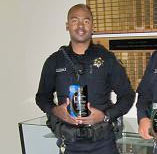 Officials in Oakland, California will meet Tuesday to decide whether to continue using red light cameras. City staff are recommending that the council's Public Safety Committee extend for another three years the agreement with Redflex Traffic Systems that expires September 30. The Australian photo ticketing company began issuing automated citations on Oakland streets in 2008.
Officials in Oakland, California will meet Tuesday to decide whether to continue using red light cameras. City staff are recommending that the council's Public Safety Committee extend for another three years the agreement with Redflex Traffic Systems that expires September 30. The Australian photo ticketing company began issuing automated citations on Oakland streets in 2008.The following chart shows the number of violations recorded 46 days before the timing change (11/11/09 through 12/27/09) compared to the number issued 46 days after the change (12/28/09 through 2/12/10).
Intersection Before After Yellow
Time
(after)% Change 66th Avenue / San Leandro WB 254 146 4.9 -42.5 66th Avenue / San Leandro NB 345 142 5.0 -58.8 Jackson St. / 7th St. 124 52 5.1 -58.1 MacArthur Blvd / 82nd Ave 212 95 5.1 -55.2 Foothill Blvd / High St 217 157 4.9 -27.6 High St / Brookedale Ave 418 101 4.8 -75.8 Total 1570 693 -55.9
Data as reported in the April 27, 2010 City of Oakland memo, with 27th and Northgate excluded because the installation date was too close to the date of the timing change. Documents courtesy of highwayrobbery.net